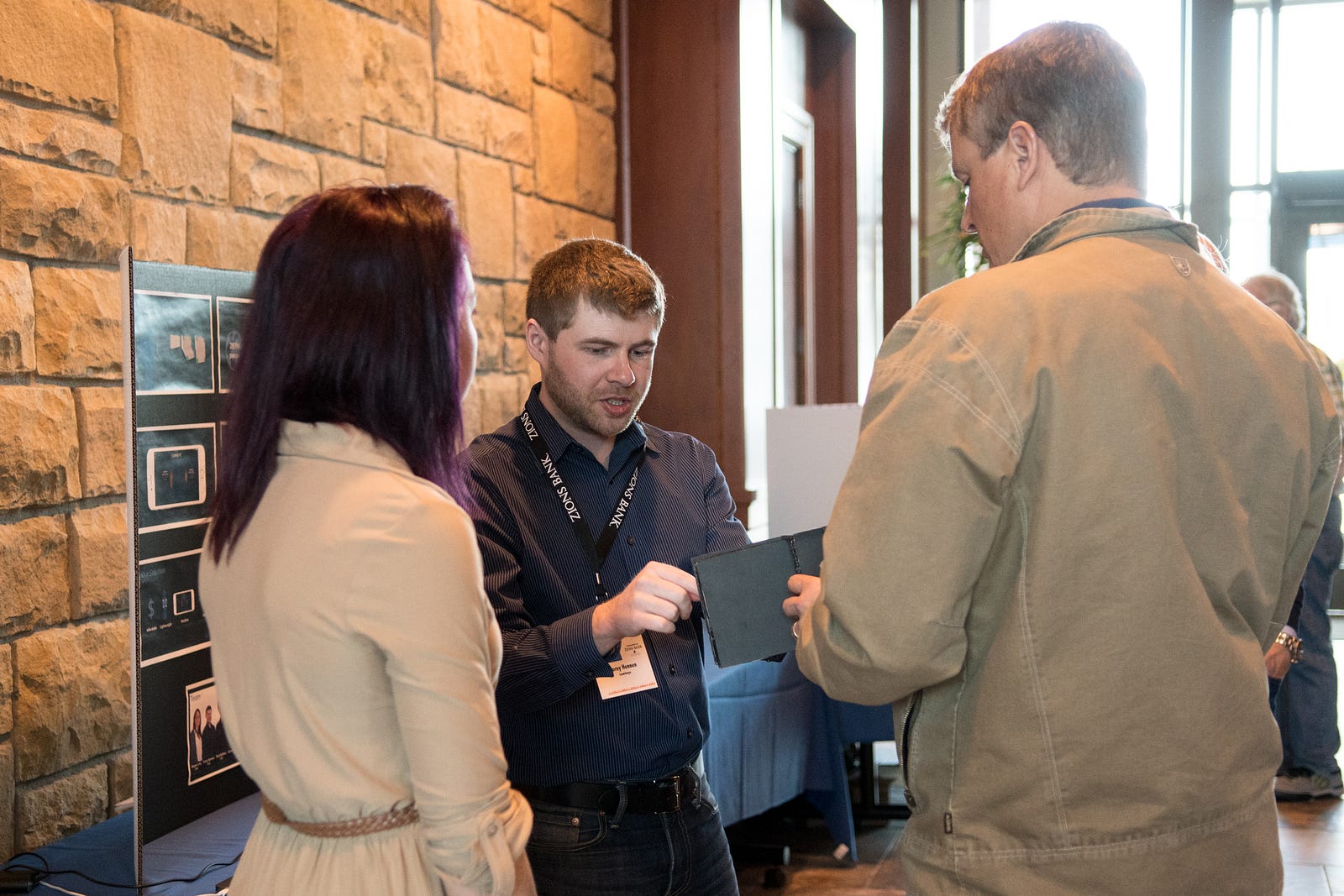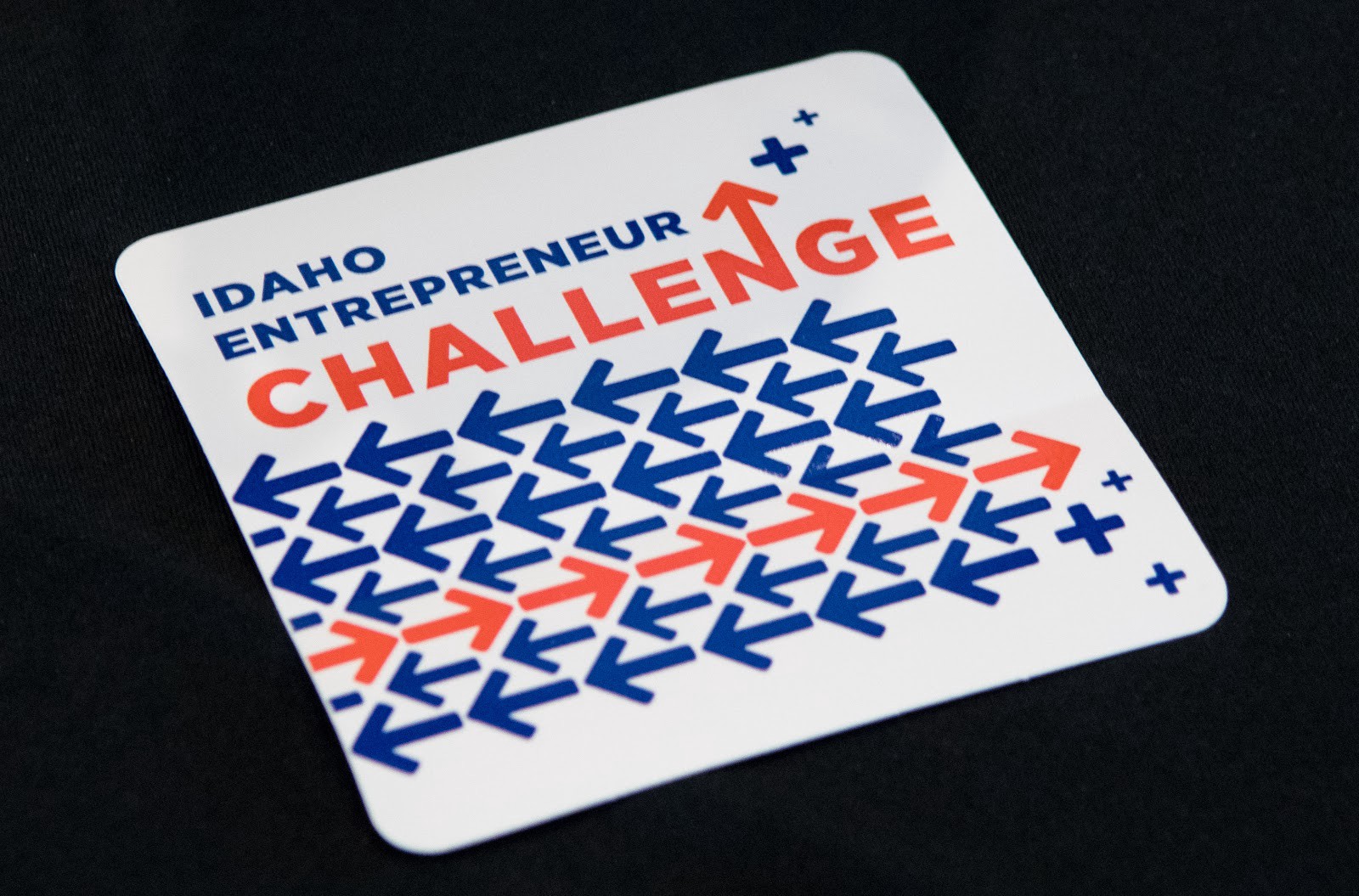A wheel design to eliminate road ruts for American farmers. A new reseller model bringing internet access to villages in rural Mexico. A radar device that allows first responders and military to see through walls before entering a building. These are just a few of the pitches from teams competing in the Idaho Entrepreneurship Challenge held at Boise State College of Innovation & Design. 63 talented students on 24 teams from five Idaho colleges participated in the final round, and met up with judges with deep and varied experience in tech innovation and product leadership.
Students are natural idea generators. Exposed to new concepts, people, and settings, students are in a learning mindset and readily apply their minds to solving problems on campus, locally, and even globally. But how can campuses build on this natural inclination to help students take their ideas a step further? It takes work to create and nurture a culture that fosters student entrepreneurship, whether that’s toward commercial or social good. Reflecting on the entrepreneurship challenge in Boise, as well as my experience at Harvard University and Junior Achievement, I’ve observed consistent patterns — patterns that apply to corporate campuses as well as college ones.
Build on the learning mindset — not just the educational one. Students attending university have been focused on concrete, measurable outcomes: final grades and university acceptances. And these milestones matter. But as entrepreneurs, students will find out that most ideas fail, and that learning to fail quickly, adapt their approach based on these mistakes, and start again with improved information is critical. As one young mechanical engineer explained to me, “We know how not to build it one million times. And we’re getting closer each time.” To encourage this thinking, campuses are developing labs settings, like Harvard’s Innovation Labs, and bringing in professors of practice to offer applied guidance. Sometimes these initiatives come with credit hours or other academic benefit.
Organizations as diverse as Fidelity Investments and the New York Public Library are also adopting this tactic. While lean startup is a well-known principle in parts of the working world, to paraphrase William Gibson, this future is still not evenly distributed. Done right, a labs environment can provide a pathway to a new kind of learning. A critical part of this learning stems from transparency: organizations used to sweeping failed projects under the rug are now sharing them via processes like blameless post-mortems to capture lessons and encourage experimentation. Popular new books like Radical Candor and Principles emphasize the benefits of rapid and transparent feedback as a driver of a growth mindset.

Encourage entrepreneurs and intrapreneurs to start with what they know. The media covers innovation in selective ways: the latest dating app is going to get a lot more airtime than a transformative technology in the construction industry. But don’t let that drive you to chase the next media-friendly tool and dismiss the power of what you know. Pitches that stood out in Boise included phrases like, “Because I grew up on a farm, I know that …” and “As a father of six children under twelve, I identified the need …”
How can this extend to your organization? Mine employee creativity with hackathons or challenges addressing topics specific to your organization or industry. And don’t let top-down lead: work with employees tackling these problems head on to generate that list of topics.
Enable and reward cross-disciplinary learning. Media interest in formalized online learning, or “peak MOOC,” occurred in about 2012, and with it the mandate that everyone must learn to code. Today, the interpretation is more nuanced: Quantitative literacy and understanding how software works are vital skills, but not everyone will become a software developer. There’s a renewed appreciation for the liberal arts, especially now as we are confronted by the repercussions of our rapid transformation to a tech-enabled society. On campuses, academic leaders are facilitating multidisciplinary study through curriculum reform, and entrepreneurship centers are making a concerted effort to bring together students across disciplines to solve problems.
Similarly, training across an organization can encourage horizontal thinking — employees prepared to tackle challenges in new ways, and think across silos. A product leadership approach can unite teams with different skill sets, limiting the Balkanization of disciplines like design and engineering. And organizations are increasingly supportive of all kinds of learning: a successful entrepreneur in the not-for-profit education industry once shared with me that when his organization was growing, it took him a while to understand why offering tuition reimbursement for French classes might matter to his SaaS business. In the end he concluded that these courses were well worth the investment — he reaped the reward of engaged employees in a more creative, learning mindset.
Set the stage for formal and informal mentor networks. Formal networks are offered by many career services departments: students should not overlook the ability to trade on alumni loyalty for a conversation. But in a hyper-networked world, formal programs should not prevent students from reaching out directly to someone they admire, whether that’s a recent grad or an established leader. As fellow judge Peter Boyce observed, there’s tremendous power in a carefully crafted message sent from an .edu email address — an otherwise overcommitted exec will sometimes make time for students.
Organizations can provide formal mentor pairings or brown-bag lunches, and reverse-mentoring programs around digital capabilities encourage bi-directional learning. But there’s also benefit in teaching employees how to build their informal networks, to reach out beyond organizational walls to experts and colleagues within and beyond their industry.

Recognize that entrepreneurs come in all shapes and sizes. We all know what a smart tech entrepreneur looks like, right? Hollywood and innumerable stock art images have taught us that it’s a young white guy in a hoodie, usually writing an inscrutable formula on a piece of glass. Great ideas don’t discriminate, so encourage others who may be dissuaded from the conversation based on that image to up your organization’s innovation IQ. In an academic or a workplace setting, providing coaching on how to tell your story about your idea is invaluable. I’ve seen both pull and push initiatives work: for the former, providing data-driven evidence on the performance of diverse teams; for the latter, consider what your organization’s version of an inclusion rider might be.
Gordon Jones, the dean of the Boise State College of Innovation & Design and founding managing director of the Harvard Innovation Lab, convened the Idaho entrepreneurship challenge. Several times, Jones referenced “blue turf thinking” — a term associated with the creativity of the Boise State athletics department, home of the famous blue turf. I’d argue that the term is also useful in framing innovation efforts more broadly: successful innovation is about both thinking different and staying true to your roots.
We’re in an environment where we all need to keep learning — agility and adaptation are the critical skills needed for 21st century knowledge workers. As education expands from episodic and location-based to lifelong and virtual, we need to value both sustained scholarship and lean learning approaches. Learning cultures enabling creative execution through transparency and cross-boundary thinking are the new competitive advantage.
Originally published April 1, 2018 on Medium.
